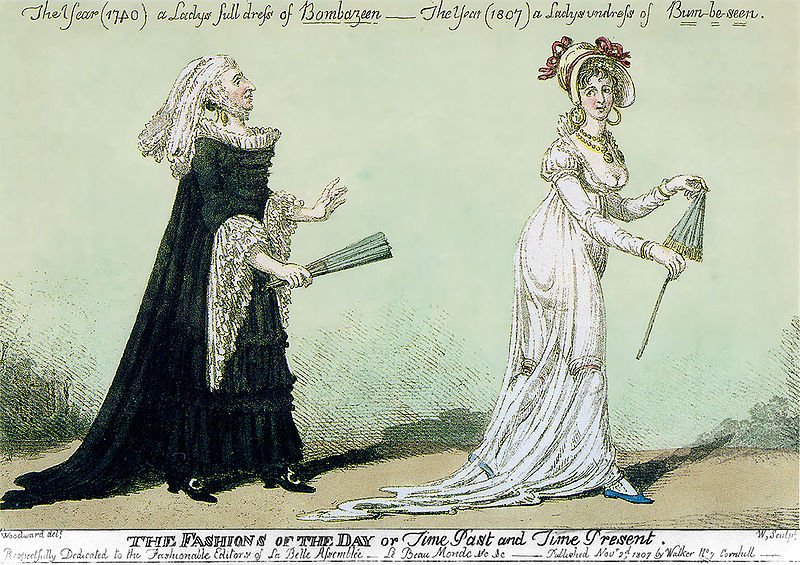A forbidden young love. A frantic
carriage chase across England. A hasty wedding “over the anvil” at Gretna
Green. Such a scene is a staple of many a Regency romance. In fact, it is with
such a mad drive to the border that I chose to end A Dangerous Compromise, and I used an elopement to Scotland again
in Border Bride.
But why might a young couple have to
elope to Scotland to marry?
A chance of geography and an act of
Parliament led Gretna Green to become famous as a haven for young lovers who
could not win their parent's consent.
In 1753, Lord Chancellor Hardwicke's
Act for the Prevention of Clandestine Marriages passed. The law took effect on
the twenty-fifth of March in 1754.
The act had been passed after a good
deal of debate and struggle, to regularize marriages and protect wealthy
families from having their underage offspring preyed upon. Prior to this, London
had become infamous for "Fleet marriages" where disreputable
ministers would perform a wedding within the “Rules of the Fleet Prison.” Clergymen
who had been imprisoned for debt could live in the Rules, an area just outside
the prison, meant to provide them a sanctuary. Since they were already here for
being in debt they could not be fined for performing irregular marriages, and
so were effectively beyond the law of the time.
By the 1740's, it is estimated that
around a hundred minister had set up in business to marrying anyone who had the
money for it. They could even provide a groom if a pregnant woman needed
legitimate status for her child. The bride and groom exchange vows, coins exchange
hands, and the couple was married.
These Fleet weddings had been the
bane of many a rich family. Stories circulated of underage heiresses who had
been tricked, or kidnapped and forced, into marriage by unscrupulous men. Fathers
also complained of sons who had married unsuitable brides—two dukes saw their
sons married in such secret ceremonies.
In 1754, the informal wedding was
swept away. The new act required that the groom and bride must each be 21 years
of age, or have the consent of their parents or guardians. The wedding had to
take place during daylight hours in a parish church ceremony within the Church
of England. For "three several Sundays" prior to the wedding, the
banns had to be posted—meaning the curate would ask "after the accustomed
manner" if anyone knew any reason why these two could not marry. If the
couple lived in separate parishes, banns had to be called in each. Finally, a
license had to be obtained and the marriage had to be recorded in the parish
church.
To avoid these conditions, a Special
License could be bought, so that bans did not have to be posted and the
marriage ceremony could take place anywhere. But such a license had to be
obtained from the Archbishop of Canterbury's offices, and the names of those to
be married had to be written on the license. With these constraints, such a
license did not help young couples who were trying to wed against the wishes of
their families.
By requiring parental consent, the
act gave parents the right to invalidate any marriage they considered
undesirable. A clergyman who preformed an illegal marriage could be transported
for up to fourteen years. English legislators expressed relief at having done
away with foolish notions of romantic love in favor of more practical statutes
governing the institution.
However, because Scotland and
Ireland (and also the Isle of Man) were separate countries, the act applied to
only those marriages contracted in England. It also did not apply to Quakers
and Jews, who wed outside the Church of England (and who also stood outside the
power and wealth the act sought to protect).
Ireland had already enacted laws
with heavy penalties to do away with clandestine marriages. However, in
Scotland, a couple had only to be 16 years of age and had only to declare their
intentions to be husband and wife in the presence of two witnesses, and their
word was law. So Scotland became one of the main places to flee to for a
quickie wedding.
On the west of Scotland, at the most
southerly point of the English border, the main road between Carlisle and
Glasgow passed through the small village of Gretna Green. A half-mile from
Gretna, the road crossed the river Sark, which marked the border itself. The
closest village on the English side, before you reached Carlisle, was Longtown.
Near the Solway Firth, the Greta
Green of Regency era is described in Gretna
Green Memoirs as, "...a small village with a few clay houses, the
parish kirk, the minister's house, and a large inn...from it you have a fine
view of the Solway, port Carlisle and the Cumberland hills, among which is the
lofty Skiddaw; you also see Bowness, the place where the famous Roman wall
ends."
Within Gretna, at the Headlesscross,
is the junction of five coaching roads, and here lay the Blacksmith's Shop.
Next month, Part II of Gretna Green
Sources:
Romances
of Gretna Green and its Runaway Marriage by Lochinvar
Gretna
Green Memoirs by Robert Elliott
Shannon Donnelly
Bio
Shannon Donnelly’s writing has won numerous
awards, including a RITA
nomination for Best Regency, the Grand Prize in the "Minute Maid
Sensational Romance Writer" contest, judged by Nora Roberts, RWA's Golden
Heart, and others. Her writing has repeatedly earned 4½ Star Top Pick reviews
from Romantic Times magazine, as well as praise from Booklist and
other reviewers, who note: "simply superb"..."wonderfully
uplifting"....and "beautifully written."
Her
Regency romances, including A Dangerous
Compromise, can be found as ebooks on all formats, and include four
novellas now out as a collection with Cool Gus Publishing.
Her
Regency Novella, Border Bride, can be
found as an ebook, or in print in her collection of Regency Novellas.












 Fans have been used as both a fashion accessory and a useful tool of staying comfortable for hundreds of years. Nearly every culture has a fan of some sort and the Regency Era, the time period in which I base all my romance novels, is no exception.
Fans have been used as both a fashion accessory and a useful tool of staying comfortable for hundreds of years. Nearly every culture has a fan of some sort and the Regency Era, the time period in which I base all my romance novels, is no exception.




